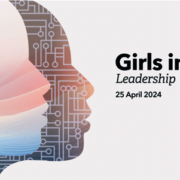By Danny Tomsett, CEO of FaceMe
Apply for any position where you have one-to-one contact with consumers, and your interviewer will be eager to ask you: “How effective are you at customer service?” Fast forward to 2018, and the digitization of retail and banking has changed how consumers interact with brands. They’re interacting with chatbots, mobile apps and websites – not humans. But as fast as we’ve handed over so-called lower value customer interactions, have we properly thought through the premise that expecting a robot to play the role of brand ambassador at any level, even a simple one, is no simple ask?
Productivity and cost saving are king…or are they?
The term “See my bank manager” was a common one in the nineties and even the early 2000s. The bank manager was available for a face-to-face chat in person; they remembered who you were and they were an advocate for you when you were dealing with other departments such as securing a home or business loan. You could trust them. This form of banking, whilst not the most time-efficient, was highly effective as a relationship tool.
Today, for most of us the term “See my bank manager” is fast becoming extinct. You can manage your day to day finances, apply for a home loan and even move large sums of money cross-country without having to change out of your pyjamas or stand in the dreaded lunch-hour queue.
Banks and retail vendors are rushing to deploy automation technologies, and with good cause as productivity and cost savings increase. Yet, spurred on by these two important currencies, have we sold out on the most important one of all: customer experience.
Recreating the human touch
As a second wave of automation and artificial intelligence (AI) emerges in the next few years, McKinsey estimates that “machines will do up to 10 to 25 percent of work across bank functions…” Yet the greatest technology in the world can’t replace the greatest relationship building tool between a customer and a business – the human touch.
In the not too distant future, many are predicting that however convenient self-service is, it won’t be enough to engender brand loyalty. The brands that succeed in future will be those whose AI can move the needle on customer experience. Put another way: we’ll have to – as archaic as it may sound – bring back the bank manager… Except, this one will need to be available 24-7, across any channel (your phone, tablet or PC) and never tire of complimenting you on your tie (or remembering you don’t like to wear one!).
Where are we going?
If chatbots were an evolutionary race, companies would do well to look at deploying world-leading conversational platforms. In this type of alternate future (as opposed to one in which callers scream OPERATOR! OPERATOR! OPERATOR! at their top of their lungs and bang on the 0 key until they’re connected to a human), Digital Employees will help you realise immediate and meaningful experiences for your customers through relationship management. They will act of masters of personalised service delivered one-on-one and in a scalable manner to hundreds of customers instantaneously using natural language. In short: an omnipresent bank manager to clients wherever and whenever they need one.
The business case stacks up
Australian and NZ businesses alone lose $720 per bad customer experience (Ernst and Young); and 55% of consumers would pay more for a better customer experience (Defaqto Research). Coupled to this, companies that excel at customer experience grow revenues 4-8% above the market (Bain & Co). Viewed this way, ‘price’ becomes a question of placing a value on frustrating interactions; or a price point on the opposite.
So, perhaps the next time you hire a bot, what you should be asking it is: “How effective are you at customer service?” Have your machine learning think about that!
ENDS
Visit https://www.faceme.com/ for further information.






























